Rotary International President, Jennifer Jones, Canada District 6330 Governor, Mike Chaffee (Flint, Michigan) Club President, Sue Storie (2022-23)

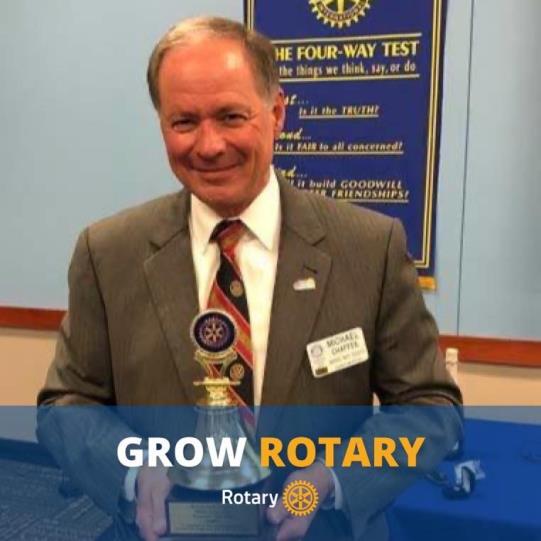
District website: https://rotary6330.org/
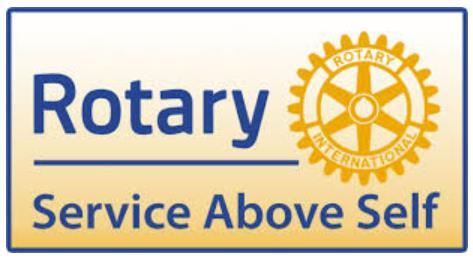


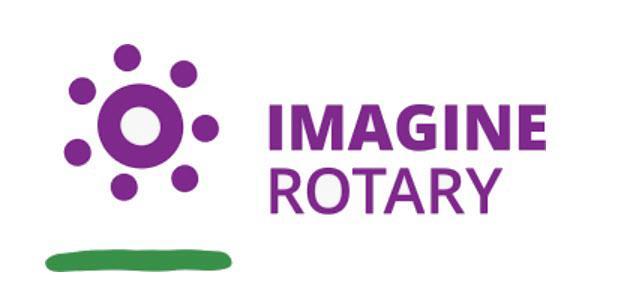

Rotary International President, Jennifer Jones, Canada District 6330 Governor, Mike Chaffee (Flint, Michigan) Club President, Sue Storie (2022-23)


District website: https://rotary6330.org/




Page No.
Rotary Monthly Themes (Rotary calendar) & Rotary Vision Statement 1 3 Coming Events 4
IMPORTANT ROTARY INFORMATION 5
RI President Jennifer Jones’ January message 6 Please donate to The Rotary Foundation 7
ROTARY’S JANUARY FOCUS – VOCATIONAL SERVICE 8
THE ROTARY FOUNDATION 9
FROM D6330 10
UKRAINE NEWS 11
UNITED NATIONS’ DATES 13 January 27 13
POLIO NOW 14
A Step Backwards (Gates’ notes) 15 Misinformation (PBS Newshour) 17 Final Push 18
ROTARY ACTION GROUPS 19
ESRAG – Environmental Sustainability Rotary Action Group 19 Beekeeping 20 Plastics, Trees, CO2 21
WASH Rotary Action Group 23 Get Involved 24 Cadre of Technical Advisors 25
ROTARY’S CORE VALUES 26
How to tell friends about the Passport Club + our 2022-23 Club President 27 PEP Project 28
Per capita dues 29 Election and Rotary Trivia 30 Speakers’ Passport – Wednesday, January 4 32 Happy Chats 33
Object of Rotary Four-Way Test
Rotary’s Code of Conduct Rotary’s Vision Statement & Rotary Foundation
34 35 36 37
D6330 Graphic and AGs 38 Humour 39 Inspiration Rotary 40 Support our Sponsors 41 References 42
The Calendar below shows Rotary’s monthly themes.
Month
July Transition month/New beginnings
August Membership and New Club Development
September Basic Education and Literacy
October Economic and Community Development


November Rotary Foundation December Disease Prevention and Treatment
January Vocational Service February Peace and Conflict Prevention/Resolution March Water and Sanitation
April Maternal and Child Health May Youth Service June Rotary Fellowships Click the flags below
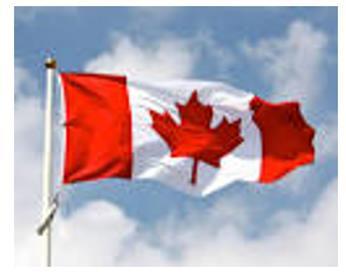

REGULAR MONTHLY MEETING ONLINE

Happy New Year
Wednesday, January 4 at 7:00 p.m.
Guest Speaker – Detective Constable Jeff Johnson Plan to attend!

COMMITTEE MEETING
Tuesday, January 24 at 7:00 p.m.
JANUARY MONTHLY BOARD MEETING
January 25 at 7:00j p.m.
HAPPY

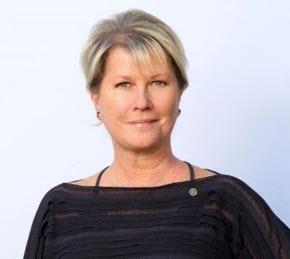
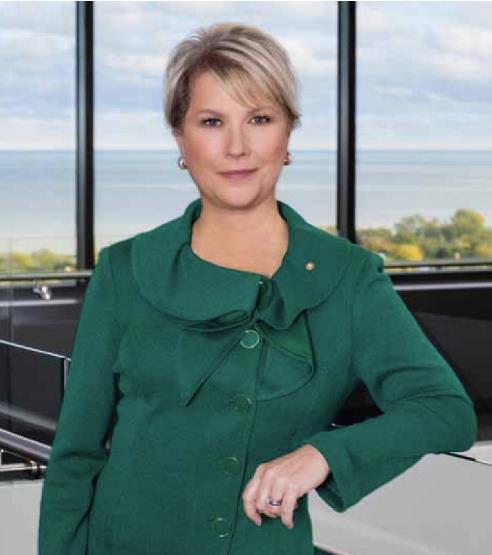



Rotary recently surveyed our members and found something that should be unsurprising but still caused many of us in Rotary leadership to sit up and pay attention: The single most important factor in member satisfaction is the club experience. How at home you feel in your club, how rewarding club meetings are, and how engaged you feel in service projects.
I have seen this firsthand across the Rotary world this year. When members feel an emotional connection to their club, they cannot imagine leaving. And that connection is often forged in “Rotary moments,” when people feel that special connection to the people around them and the impact of their service.
Our Imagine Impact Tour is all about shining a light on those Rotary moments and encouraging our members to tell their stories.
But there’s something else that makes an enormous difference in building and sustaining that connection. It’s the comfort and care of our members – both Rotarians and Rotaractors. As my Rotary friend Todd Jenkins says, “People can’t see how you think, but they sure can see your actions.”
We are in the relationship business, and if we take care of each other – genuinely show concern for each other – then we will make friends for life, and we will do anything to widen that circle of friendship.
The question is: How do we live with our eyes wide open and do the things that really matter? We do this by taking time for each other, actively listening to one another, and treating every Rotary member as equally valuable – no matter how long we have been a member of what position we hold.
People like me in Rotary leadership can offer all kinds of advice about how to make your club experience more valuable. But what’s most important is for everyone in every Rotary club to speak up and listen to one another. We should never be afraid to share with our fellow Rotary member what we expect to get out of our membership and have an open discussion about how to make that happen.
To lead a Rotary club is to invite such dialogue and to be willing to try new approaches. Good leadership is giving it away. Propping others up. Allowing others to feel the victory.
I have one last request for club leaders. We still need to do more worldwide to increase our female membership. It’s up a bit this year, but I know we can and must do better. Rotary is growing again. As I write this, we’re just a handful of members away from surpassing 1.2 million Rotarians again. So, let’s redouble our efforts to bolster our clubs with great new members, then keep them for life by providing comfort and care.
JENNIFER JONES President, Rotary International“Imagine, a world that deserves our best where we get up each day knowing that we can make a difference.”
If you have the power to make someone happy, do it. The world needs more of that.
Plan to donate today to The Rotary Foundation – the engine that runs Rotary!
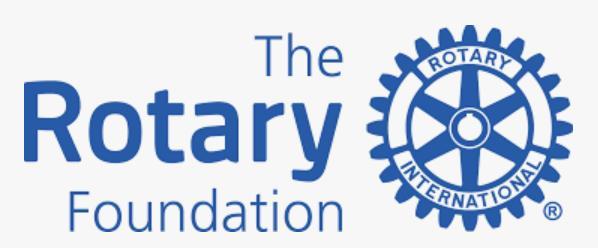
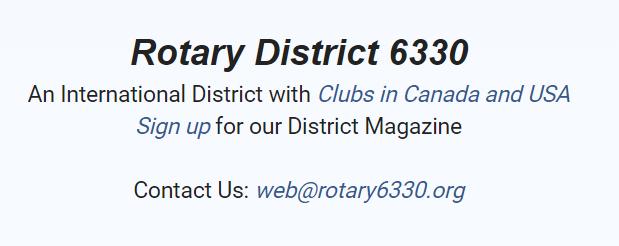




From our District 6330 website –
Vocational Service is the Second Avenue of Service and focuses on:
• Adherence to and promotion of the highest ethical standards in all occupations, including fair treatment of employers, employees, associates, competitors, and the public.
• The recognition of the worthiness of all useful occupations, not just those that are pursued by Rotarians.
• The contribution of your vocational talents to solving the problems of society and meeting the needs of the community.
During January, Rotarians are encouraged to focus on this important avenue of Rotary service.

Discussions on vocational service can lead to projects that not only develop the ethical consciousness and vocational skills of Rotarians but also the talents within their communities. Vocational Service Month is an opportunity to begin year-long vocational service activities, ranging from Rotary discussions to awards for community projects.
The following are some suggested activities to undertake during Vocational Service Month:
• Devote a meeting in January to examine the second Avenue of Service, including The Four-Way Test and The Declaration of Rotarians in Business and Professions. After expanding members' awareness, solicit their input in planning projects for the remainder of the year.

• Introduce a "mini-classifications talk" series in which each member gives a five-minute talk on his or her vocation. Schedule one speaker for the beginning of each meeting until everyone has made a presentation. The purpose of these talks is to promote vocational awareness among Rotarians and help them recognize the worthiness of all useful occupations.
• Present a vocational award to someone in the community who has exemplified outstanding professional achievement while maintaining very high ethical standards. Promote the presentation within the community and consider making it an annual event.
• Invite experts to give a presentation on the vocational needs of the community and develop a project in response to those needs. Possible projects could focus on developing character, providing career information to youth, mentoring small businesses, or organizing workshops that provide employees with new skills.
• Encourage club members to put their vocational skills to work as a Rotary Volunteer.
Since it was founded more than 100 years ago, the Foundation has spent more than $4 billion on life-changing, sustainable projects.
With your help, we can make lives better in your community and around the world.

The Rotary Foundation helps Rotary members to advance world understanding, goodwill, and peace by improving health, providing quality education, improving the environment, and alleviating poverty.

• For as little as 60 cents, a child can be protected from polio.
• $50 can provide clean water to help fight waterborne illness.
• $500 can launch an antibullying campaign and create a safe environment for children.
How
The Rotary Foundation transforms your gifts into service projects that change lives both close to home and around the world.
What impact can one donation have?
do you want to get involved in the causes you’re most passionate about?
District Governor Mike Chaffee (Flint) Council on Legislation Tony Sheard & Pat Voegelin Council of Past District Governors
Tony Sheard
District Awards Committee Mike Chaffee
District Conference Committee George Ananich Friendship Exchange Committee Erin Zorzi
Honouring Indigenous Peoples Committee Clay Melnike Insurance Committee (Canada) Todd Farrell
Interact Committee
International Convention Promotion Committee Mike Chaffee
Leadership Development Committee
Membership Committee Susan Storie
New Generations Exchange /committee Rosanne Field Public Image/Relations Committee Kirk Langford
Rotaract Committee Rebecca Price Rotary Leadership Institute Diane Chantler
RYLA (Seminar for Tomorrow’s Leaders) Danielle Bork
District Governor-elect Sonja Glass (Meaford)
District Governor-nominee Katherine Hahn (Stratford) Vice District-Governor Joseph Reynolds (Genesee Valley)
Secretary Harry Joosten (Rotary Club of London) Treasurer Harry Joosten (Rotary Club of London)
District Foundation Chair David Elliott Alumni Committee
Annual Giving Committee Bob Reynolds
District Grants Committee Myrna Inglis (Walkerton)
Endowment/Major Gifts Committee Dennis Dinsmore
Global Grants Committee David Elliott
Global Scholarships Committee Hala Jawad Paul Harris Society Committee Jamie Pole
Polio Plus Committee Katherine Hahn
District Grants Co-ordinator Myrna Inglis (Walkerton)
District Newsletter Murtada Ahmed (Global Passport) District Website Dennis Dinsmore (Genesee Valley)
Rotary Youth Exchange Ross Barnett (Goderich)
RYE Inbound Committee Marike Hannink
RYE Outbound Committee Kirk Langford




Find out how Rotary districts can apply for a grant from the Disaster Response Fund.
Now through 31 December 2022, districts can apply for grants to provide relief such as water, food, shelter, medicine, and clothing to refugees or other people affected by the crisis. Districts should work closely with local officials and groups to ensure that the funding will meet a specific community need.

Ukraine has 62 Rotary clubs and six satellite clubs with about 1,100 members, and 24 Rotaract clubs with more than 300 members. District 2232 (Ukraine and Belarus) formed a committee to help people affected by the crisis.

Wednesday, January 4 World Braille Day
Tuesday, January 24 International Day of Education


Friday, January 27
International Day of Commemoration in memory of the Victims of the Holocaust
Click the graphic below to view a short video about January 27 –
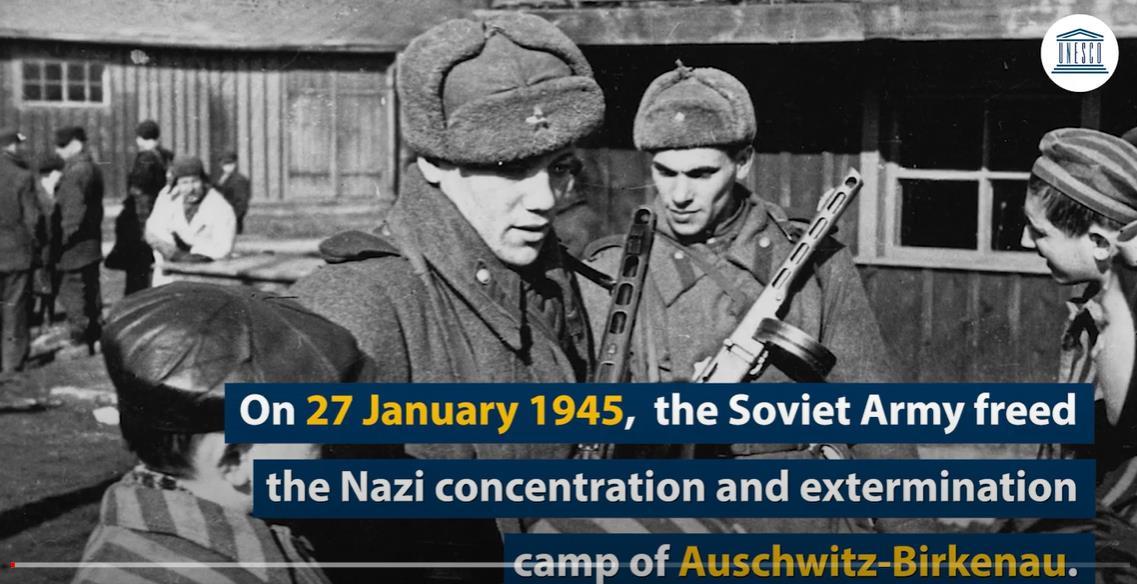
Summary of new polioviruses this week:

• Pakistan: one WPV1 positive environmental sample
• Nigeria: one cVDPV2 positive environmental sample
• Sudan: one cVDPV2 case

• Yemen: one cVDPV2 case
For more information, click here - http://polioeradication.org/polio-today/polio-now/this-week/


Click here to learn the difference between Wild Polio Virus (WPV) and Vaccine-derived Polio Virus. (VDPV)

From the Bill Gates’ Notes - https://www.gatesnotes.com/About-Bill-Gates/The-Year-Ahead-2023#ALChapter5
I’ve written in previous letters (such as this one) about how close the world is to eradicating polio, and what a magical moment in history it will be when we do. Unfortunately, COVID, extreme weather, and war have made it much harder for vaccinators to do their jobs.
Between 2019 and 2021, coverage for all childhood vaccines, including the one for polio, dropped by the biggest margin in almost three decades, and not surprisingly, polio started coming back In 2021, it paralyzed just six children in the entire world; this year, 30 children were paralyzed as of December 6. In Pakistan alone, 20 children have been paralyzed, up from just one last year
After several years of being limited to Afghanistan and Pakistan, wild poliovirus traveled to two countries in Africa this year. And strains of a variant polio virus were found in the sewers of London and New York. In each of these places, governments had to launch new efforts to stop the disease.
There could not be a better reminder that polio anywhere is a threat everywhere, and that we need to eradicate it. Of course, saying something is necessary doesn’t mean that it’s possible. I’ve underestimated this disease before, and I’ve been naïve about how difficult eradication would be, so I have to acknowledge that it could fail. But I don’t think it will.
Earlier this year, ten eminent scientists and health experts made the case for both why this disease should be eradicated, and why it can be eradicated, in the 2022 Scientific Declaration on Polio. This declaration is supported by more than 3,000 signatories from 117 countries. It’s short (much shorter than this letter), to the point, and well worth your time.

Here are my own reasons for being optimistic. Despite this recent comeback, the momentum is still on our side: Polio cases are down 99.9% over the past three decades. We now have a new vaccine, called nOPV2, that will prevent outbreaks of polio variants. As of November, more than 500 million doses of nOPV2 had been administered in 23 countries. And a more detailed look at the situation in Pakistan and Afghanistan shows that while cases were up slightly this year, the overall trend is that entire families of wild poliovirus are being eliminated.
We’re also learning from the recent setbacks. In October, the group leading the eradication effort the Global Polio Eradication Initiative adopted a smart five-year strategy for overcoming the final obstacles to eradication. And donors stepped up to partially fund this new strategy.
In October the foundation announced a new $1.2 billion pledge, and pledges from other donors brought the total to $2.6 billion. There’s still a long way to go the commitments amount to a little more than half of what GPEI needs to finish the job but this was a fantastic start.
No update on polio would be complete without a big thank-you to Rotary International. They were part of this effort long before the Gates Foundation was. Since we became partners on eradication, we’ve jointly raised $1.8 billion for this work, and there’s more to come.
Rotarians also lead massive vaccination campaigns to reach children all over the world. Sometime in the next few years, when polio is finally eradicated, my first phone call will be to thank and congratulate the team at Rotary International.
Below left - When New York State had the first U.S. case of polio in nearly a decade, New Yorkers had to get immunized. (Ed JONES / AFP)
Below right - After the first polio case was detected in New York, the virus showed up in New York City’s sewage. (ANGELA WEISS/AFP)
Click here to read more.

This article focuses on efforts to provide routine immunization to children, including during the pandemic, highlighting how local healthcare workers are responding to various challenges.
Millions of children around the world did not get routine vaccines as a result of disruptions and disinformation caused by the COVID-19 pandemic. In the Democratic Republic of the Congo, these setbacks threaten to undo years of public health advances. Special correspondent Benedict Moran and video journalist Jorgen Samso report.
• Judy Woodruff: Millions of children around the world did not get routine vaccines as a result of disruptions and disinformation caused by the COVID-19 pandemic.
That is the largest sustained decline in childhood immunizations in a generation, according to the United Nations. In some countries, as in the Democratic Republic of the Congo, these setbacks threaten to undo years of public health advances.

Special correspondent Benedict Moran and video journalist Jorgen Samso report.
• Benedict Moran: In this health center on the outskirts of Kinshasa, community health workers are preparing to administer a round of routine vaccinations.
In Africa alone, every year, more than 800,000 lives are saved because of routine vaccines, according to the World Health Organization. Though a painful part of growing up, vaccines are one of the most successful public health interventions. It is the safest way to protect children from life-threatening diseases like polio, measles, rubella and tetanus.
But over the last two years, vaccination rates are plummeting, not just here, but across the planet. And doctors are worried. For the first time in a generation, last year, more than 25 million children missed out on basic vaccines. Health workers fear that, without focusing greater efforts on increasing the rate of childhood vaccination, many diseases that were once under control may return.
In July, the U.N.'s World Health Organization sounded the alarm.
Click here to read the entire article.
2022 may well go down in history as the year of contrasts in the global effort to eradicate polio.
At first glance, with polio detections in places such as New York and London and an increase in cases in Pakistan, it may seem that the effort is backsliding. And while any detection of any poliovirus is a setback particularly in areas where the disease had been long gone, like southeast Africa a deeper analysis reveals a more encouraging story: 2022 saw perhaps some of the most significant progress in the programme’s history, and has set up the global polio effort for a unique opportunity to achieve success in 2023.
Endemic wild poliovirus transmission in both Pakistan and Afghanistan is becoming increasingly geographically restricted, with fewer virus lineages remaining active.

The bulk of variant type 2 polio (cVDPV2) cases are also becoming more restricted, with 90% of all global cases restricted to three ‘consequential geographies’ (eastern Democratic Republic of Congo, northern Yemen and northern Nigeria).
And emergency outbreak response efforts to wild poliovirus type 1 in southeast Africa continue to gain momentum.
To evaluate this progress as 2022 draws to a close, independent technical expert and advisory groups are taking an in-depth look at the prevailing epidemiology, assessing impact of eradication efforts and putting forth key strategic approaches to enable an all-out effort against the virus in the first half of 2023.
The first of these groups met in early October, when the Technical Advisory Group (TAG) for Pakistan reviewed vaccination coverage and disease surveillance across the country. Despite the increase in new cases, the TAG found the outbreak to be extremely geographically confined, thanks to concerted emergency efforts led by the government and supported by partners. Today, polio transmission is restricted to the six districts of southern Khyber Pakhtunkhwa province a fraction of the country’s 180 districts. Encouragingly, the virus has not re-established a foothold outside the core outbreak zone, meaning the traditional reservoirs of Karachi, Peshawar and Quetta are no longer endemic to the virus, a historical first.
More good news came out of the TAG’s analysis of the genetic biodiversity of virus transmission. In 2020, Pakistan had 11 separate chains of virus transmission. This was reduced to four in 2021, and today, just one family of the virus remains in the country. The approaches being implemented in Pakistan are working despite some serious challenges.
At right, children displaying their “purple pinkies.”
Click here to read more from this article about the positive news regarding Polio Eradication efforts.
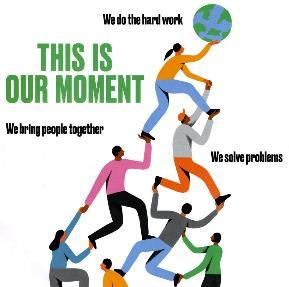
Click here to view a short video on ESRAG and the Environment focus.


Click here to catch up on archived ESRAG newsletters.

Click here to view a short video on other ways of reducing plastic use.
 By Eng. Felix Kariuki, Lavington Eco Rotary Club
By Eng. Felix Kariuki, Lavington Eco Rotary Club

Kenyan and American Rotarians are teaming up with a Maasai community and the Kenyan NGO Acacia Moyo to protect land vital both to wildlife and the Maasai, who are perfectly poised to be leaders in environmental stewardship of Kenya’s fragile natural resources. Kenya’s oldest Rotary Club (Nairobi), one of its newest (Lavington Eco), and the Rotary Club of Los Alamos (New Mexico) are raising money for a bore well as part of Acacia Moyo’s beekeeping initiative.
Beekeeping can generate significant income for the Maasai because of its low operating costs and the huge unmet demand for honey in Kenya and worldwide. The region’s indigenous acacia trees provide pollen that produces a distinctively sweet honey. The bore well will irrigate a bee forage garden with the potential for four honey harvests a year, generating new revenue that will reduce the pressure on Maasai families to sell off their land to meet their families' needs. It will also reduce their dependence on pastoralism, which generates significant greenhouse gas emissions.
Kitengela is a marginalized community of approximately 7,000 people living on the Athi-Kapiti plains, just south of Nairobi National Game Park in Kenya. Maasai livelihood is focused on livestock. The Kitengela Maasai still own thousands of acres of land, and Acacia Moyo is working to equip them to keep it by generating new income from careers that combine their deep understanding of land stewardship with opportunities in the 21st century economy.
Urban sprawl, dire poverty, and the forced sale of their grazing lands threaten the Maasai’s survival. Cattle are a Maasai’s bank account, which they use to pay school fees, bride price, and other expenses. Without grazing land, a Maasai cannot keep cattle. Without cattle, he is not a Maasai. The loss of land leads to a loss of identity, culture, tradition, and community.
The loss of land also causes havoc to the wildlife population of the Athi-Kapiti plains, which is a dispersal and breeding area for many species of animals that live in the Nairobi National Game Park. It also forms part of the essential migratory corridor for animals moving to and from the Serengeti in Tanzania and Maasai Mara in Kenya. The Maasai are a vital element in this equation as they are natural conservationists. They do not hunt, live peacefully alongside wildlife, and possess irreplaceable knowledge about each species’ habits. The Wildlife Foundation, located in the midst of the community, trains many Maasai to become invaluable rangers and anti-
poaching staff. With little support from the Kenya Government, the community has formed its own conservancy to protect the Athi-Kapiti Plains.
Photo: Nairobi spreads ever closer to wildlife habitats. Credit: Acacia Moyo

The Kitengela Maasai’s intimate knowledge of the vegetation and the grazing habits of livestock and wildlife have given rise to their own land use regulations. This enables them to adapt collectively to changing climatic conditions.

This relationship with the natural world makes them agents of the People, Planet, and Prosperity agenda for sustainable development.
After much research owing to the impact of long-term drought, urbanization, land fragmentation and the aftereffects of COVID 19, Acacia Moyo, founded in 2017 by Kenya-born Kenny Mann and the Maasai's then Assistant Chief Nickson Parmisa, initiated a beekeeping and honey-making project as a viable alternative livelihood for the community in Kitengela.
The demand for honey in Kenya is 100,000 tonnes, but the nation’s current production is only 7500 tonnes. The global market for honey is worth $12 billion.
Kitengela’s indigenous trees are acacias, whose pollen results in an exclusively light and sweet honey. The area being arid and semi-arid, we have to increase foliage to enable at least 4 harvest seasons per year and drill a borehole for dedicated water supply. Drought-resistant roses and chilies are being piloted in the bee garden to provide additional pollen for the bees.
Beekeeping is inexpensive to maintain once initial costs have been covered. The community has already appointed a beekeeping committee consisting of a chairperson, a secretary, and a treasurer. These are respected community leaders with vast business experience. Participating members of the community include the Ntalala Women Microfinance group.
The Kenyan and American clubs are working to prepare a Rotary Global Grant proposal for the bore well. Email me if you’d like to join the project!







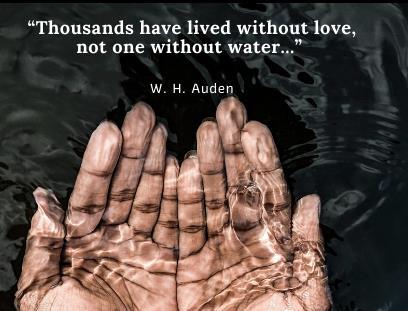

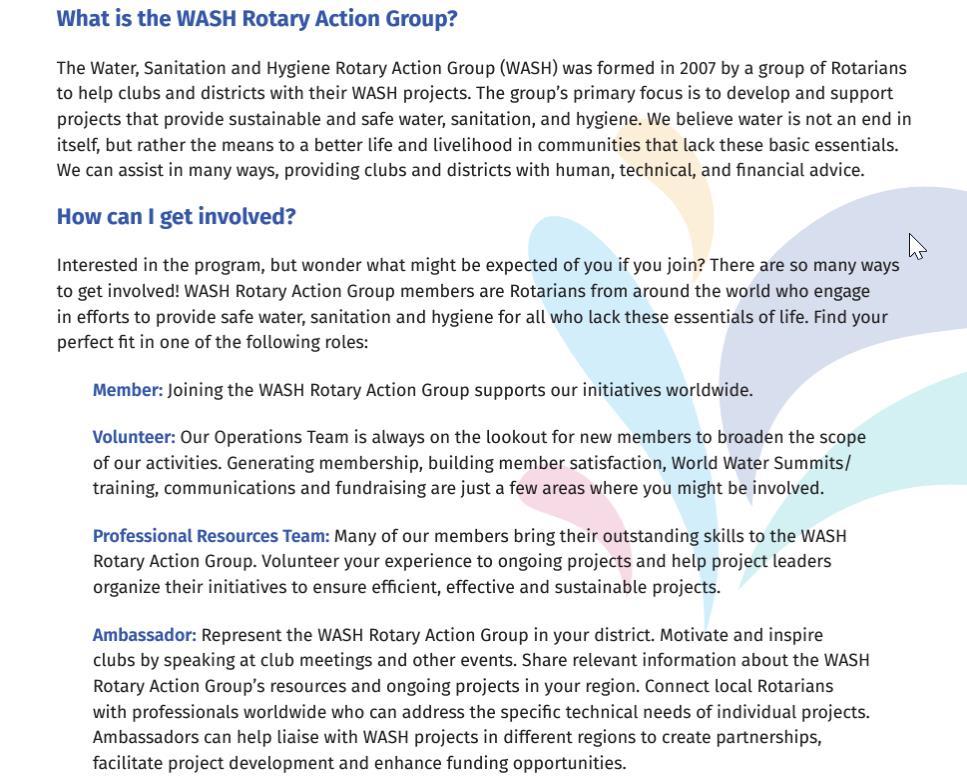



The Rotary Foundation Cadre of Technical Advisers is a gr0up of Rotarians who volunteer to use their professional skills and technical expertise in Rotary’s areas of focus or financial auditing to advise Rotarians who are planning and working on Rotary Foundation grant projects. The Cadre is composed of more than 700 members from 75 countries who speak ore than 80 languages.





Rotary is a global network of 1.4 million neighbors, friends, leaders, and problem-solvers who see a world where people unite and take action to create lasting change – across the globe, in our communities, and in ourselves.
Solving real problems takes real commitment and vision. For more than 115 years, Rotary's people of action have used their passion, energy, and intelligence to take action on sustainable projects. From literacy and peace to water and health, we are always working to better our world, and we stay committed to the end.
Learn more about our structure and our foundation and our strategic vision
The Passport Club members are encouraged to join local (and other) clubs to learn more about Rotary, get to know other Rotarians, gain a new perspective and appreciation for Rotary and Rotarians. Here is a list of online clubs where you can earn a make-up along with learning a whole lot more about Rotary! Why not visit them all?

• Rotary E-Club of Canada One – Rotary On Demand, Where you want, When you want!

• Rotary Club of One World
• Rotary E-Club of World Peace
Click here to attend this week’s posted meeting of E-Club of Canada One. These meetings are posted online and available 24/7!

Stay tuned, engaged, and plan to participate!

Do you need a make-up? missed meetings? To learn about other Rotary clubs?Club President for 2022-23 – Sue Storie





Per half year for 2022-2023: $35.50
All clubs are billed $1 per member on their July invoice to help defray the costs of the Council on Legislation. Some invoices may include variable charges for Rotary magazine (other Rotary regional magazine subscriptions are billed separately) and variable fees for insurance (U.S. clubs only).
See the Manual of Procedure for more information.







President - Sue Storie
President Elect - vacant
Secretary - Mariann Timmers
Treasurer - Lynn Coates
Foundation Chair - Rick Storie
Communications Chair - Kitty Bucsko
Service Committee Chair - Bev Andersen
Membership Chair - Sue Storie (hoping to find someone else)
• The first service project of the first Rotary Club was the installation of public toilets in Chicago in 1917. This project made Rotary the World's First Service Club
• Rotary's primary motto is "Service Above Self."
• There's a secondary motto: "One profits most who serves best."
• There are more than 1.2 million Rotarians all over the world in more than 35,000 Rotary Clubs in more than 200 countries in all geographic areas.
• The first women joined Rotary in 1987. Today, more than 196,000 women are members of Rotary International.
• The Rotary Foundation Ambassadorial Scholarships are the world's largest, privately-funded scholarships.
• The first Rotaract Club was formed in Charlotte, North Carolina.
• Rotarians in the United States make up 28 percent of all Rotarians worldwide.
* http://rhodyman.net/RCL/RotaryFunFacts.php

• The country of Nauru has the least number of Rotarians of any country in the world, 11. Formerly known as Pleasant Island, Naura is in Micronesia in the South Pacific. Its nearest neighbor is Banaba Island in Kiribati, 182 miles to the east.
• The Rotary emblem was printed on a commemorative stamp for the first time in 1931, at the time of the Vienna Convention.
• Rotary became bilingual in 1916, when it organized a non-English-speaking Club in Cuba.
• Arch Klumph established the "Rotary Endowment Fund" in 1917, when the Kansas City, MO Club donated $26.50. In 1928, it became The Rotary Foundation.

• In 1929, The Rotary Foundation made its first gift, $500, to the International Society for Crippled Children.
• Rotary first adopted the name "Rotary International" in 1922, when the name was changed from the International Association of Rotary Clubs.
• Rotary first established Paul Harris Fellowships in 1957, for contributors of $1,000 to The Rotary Foundation.
• In 1968, the first Rotary Club banner to orbit the moon was carried by astronaut Frank Borman, a member of the Houston Space Center Rotary Club.
• The first Rotary convention was in Chicago in 1910. There were 16 Rotary Clubs.
• The first head of state to address a Rotary convention was President Warren G. Harding in 1923, in St. Louis.
• In 1979, Rotary began a project to immunize six million children against polio in the Philippines. This led to Rotary making polio eradication its top priority.
• In 1988, Rotary began the PolioPlus campaign with an initial fundraising pledge of $120 million.
• Providing Vitamin A supplements during polio immunization has averted an estimated 1.5 million childhood deaths since 1998 – the "plus" in PolioPlus.
• Rotary's fiscal year began the day after its conventions until 1913. Starting in 1913, it begins on July 1st.
• The first Rotary Boys' Week was held in New York City in May 1920, by the Rotary Club of New York.
• In 1934, Boys' Week became known as Youth Week, and in 1936, Boys' and Girls' Week
• In 2010, Youth Service became Rotary's fifth Avenue of Service.
• During the 1920s and 1930s, Paul Harris traveled extensively, ceremoniously planting trees to symbolize goodwill and friendship.
• January of 1911 was the first issue of The National Rotarian. The name was changed to The Rotarian in 1912, when Clubs were organized in Canada.
• The largest Rotary Club is the Oklahoma City Downtown Club with over 600 members.
• The fifth Rotary Test: Is It Fun?


Detective Constable Jeff has been a police officer for 22 years, working in the Headquarters Detention Unit, Uniformed Patrol, and now Financial Crimes Unit. He is currently the elder abuse specialist for the unit.
Detective Constable Jeff will be discussing the various types of frauds - mass marketing, phishing scams, identity theft/fraud, money mule, and some crypto currency.
Also, he will talk about some of the signs it’s a fraud, how to protect yourself from fraud, and what to do if you have been victimized.
This will be a very informative presentation. Please feel free to bring a guest.

Regardless of which side of the border you’re on, the Fraud is still the same. These criminals just adapt the pitch.
Plan to join!

Why should someone join Rotary? Click here for a short, important video.


Join the Happy Chats – get to know our club members!
Happy Chats are online now only on Wednesdays.


Wednesdays at 6:30 p.m. - 7:00 p.m.
Join your Rotary friends for an informal 30 minute get together.
Chat about “stuff” – and what’s important to you. Let’s get to know our members!
Plan to join our Zoom Meetings! Click here.

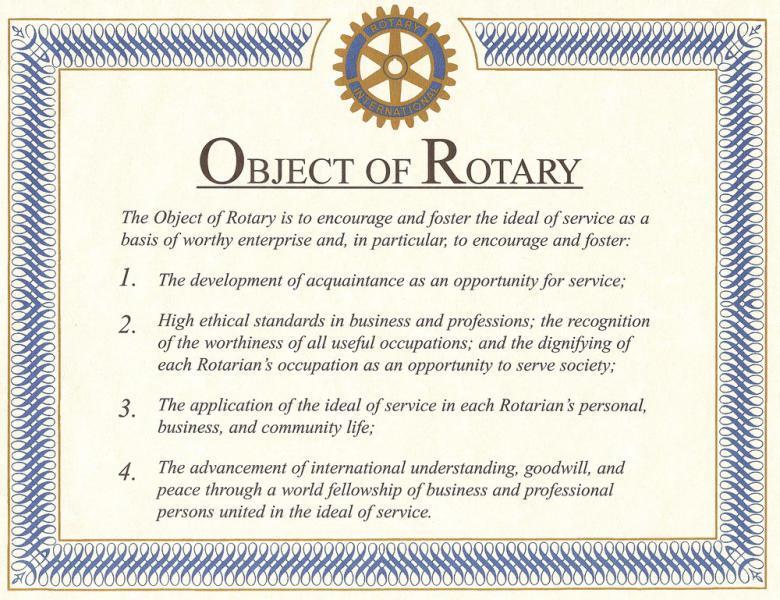

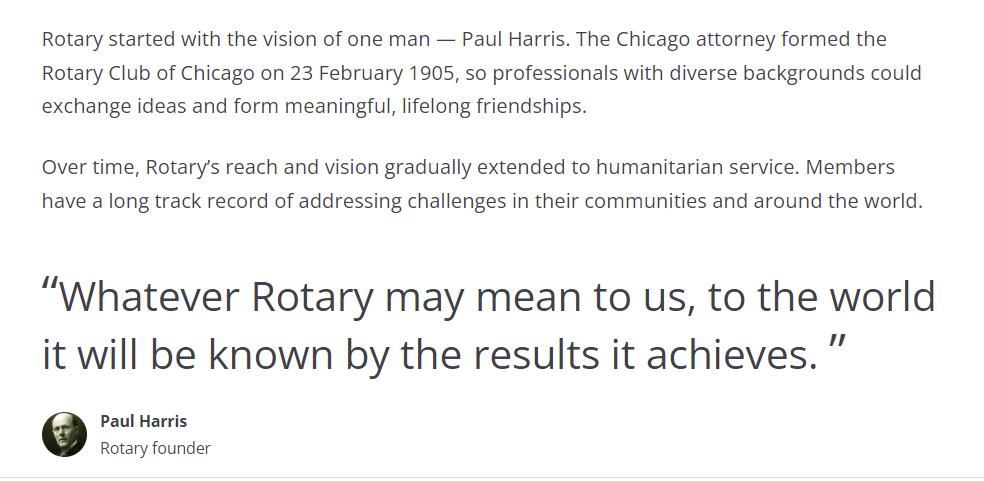

In a world where you can be anything, IMAGINE being KIND!
2022-23 Rotary Theme



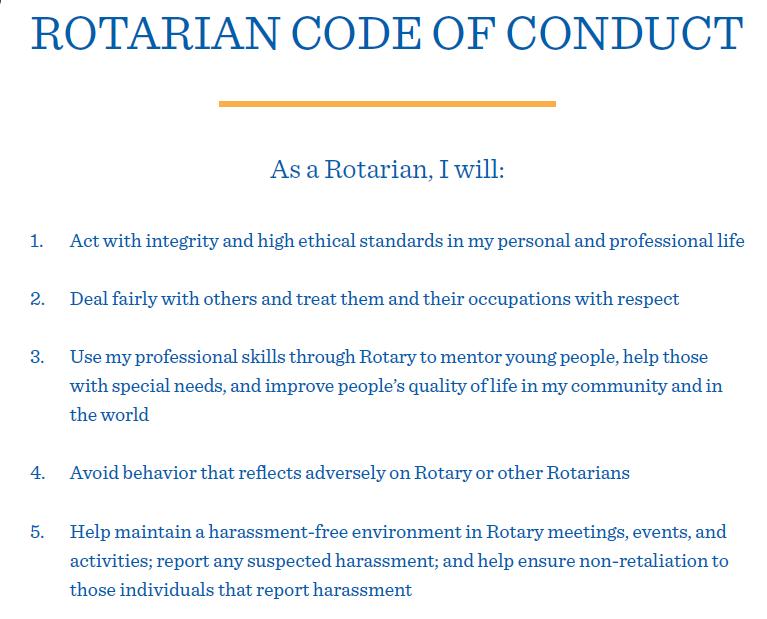
See our Passport Club Facebook page for more up-to-the-minute Passport news!
https://www.facebook.com/rotary6330passport/

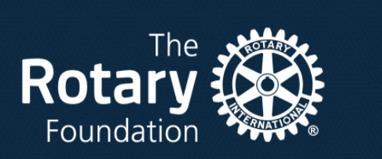
Click here for a short video.

Our Every Rotarian, Every Year (EREY) initiative encourages all Rotary club members to contribute at least what they can afford every year to help us reach our goal to support the Rotary Foundation financially each year
One who contributes $100 USD every year is a Sustaining Member. With EREY, we encourage you to contribute an amount you can afford every year.




Area Description Area Governor
1
North Bruce Peninsula from Wiarton to Paisley, including Southampton, Port Elgin Sonja Glass 2

Western northern Bruce Peninsula, including Kincardine, Walkerton, Hanover, Goderich Rosemary Davis 3
Mid-southwestern Ontario, including Listowel, St. Mary’s, Stratford, and Stratford Festival City Paul Roulston 4
London area – 5 clubs Howard Shears 5
West to St. Clair River including Sarnia, Watford, Grand Bend, Petrolia Mike Hurry 6
In the U.S., west of the St. Clair River, including Fort Gratiot, Port Huron, south to Marine City and Algonac Diane Ives 7
In the U.S., further west from St. Clair River –including Genesee Valley, Flint, south to Fenton Allen Tucker 8
9
Eastern Northern Bruce Peninsula, including Meaford, Owen Sound, Chesley, Markdale, and Thornbury Patrick Petch
In the U.S., west of St. Clair River including Clio, Lapeer, Imlay City
Jeffrey Ferweda 10 Just north of Lake Erie, including Strathroy, St. Thomas, St. Thomas Railway, and London Lambeth
Gerry Janssen



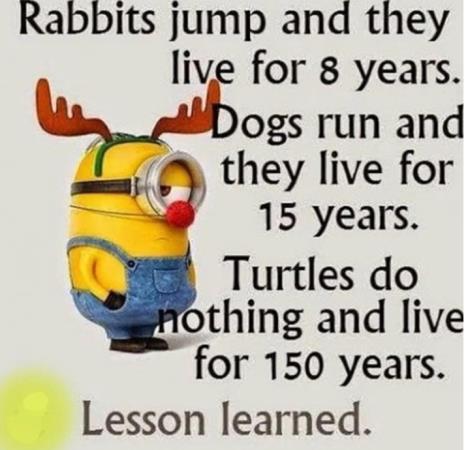

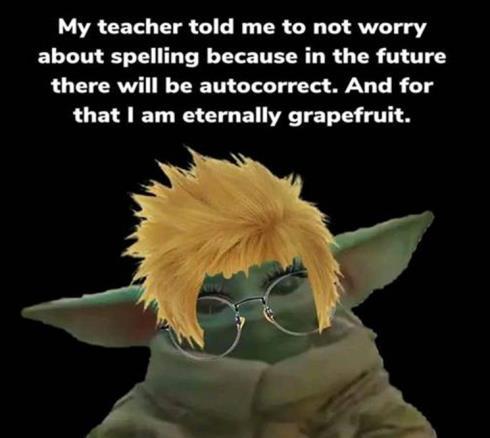


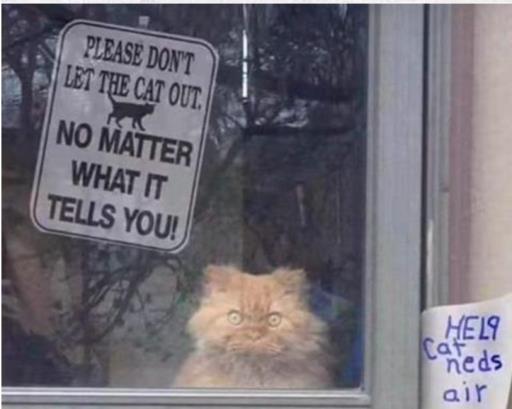


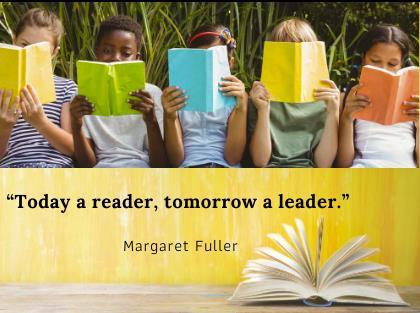
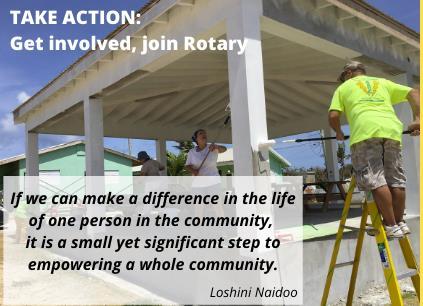
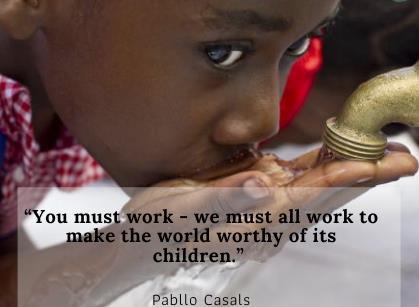
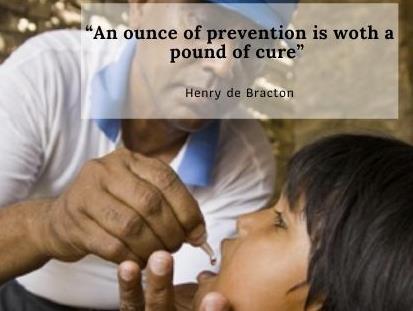
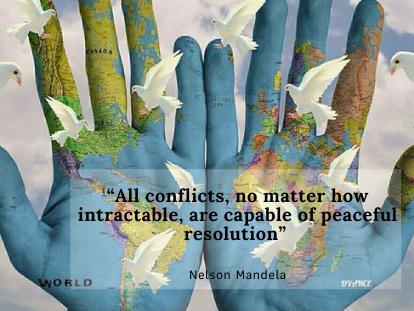
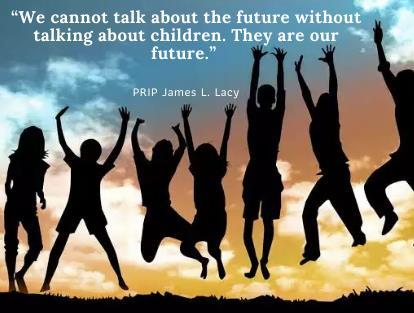

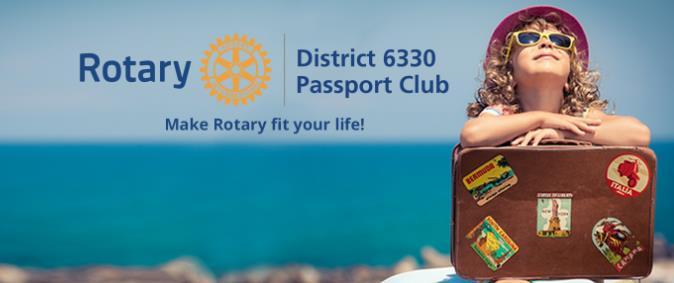





Adams, Randal Speaking of Rotary. USA: E J Press
Dochterman, Cliff. The ABCs of Rotary Evanston, Illinois: Rotary International. (363-EN)
Forward, David C. A Century of Service. The Story of Rotary International. (912-EN)
Rotary Club of Hobart. The Rotary Book of Readings. Inspiration to Change the World.
Rotary International. Honoring Our Past: The Words and Wisdom of Paul Harris. Evanston, Illinois: 1996. (925-EN)
Rotary International. Rotary Basics. Evanston, Illinois. (595-EN)
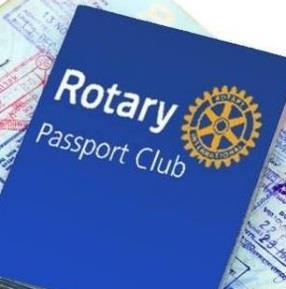
Rotary International News. Online. Rotary Global History Fellowship <https://www.facebook.com/RotaryGlobalHistoryFellowship/ >
Submissions from Club members and Social Media
Please send Club News and photos (with appropriate IDs) to Editor Kitty at ladykitt@gmail.com